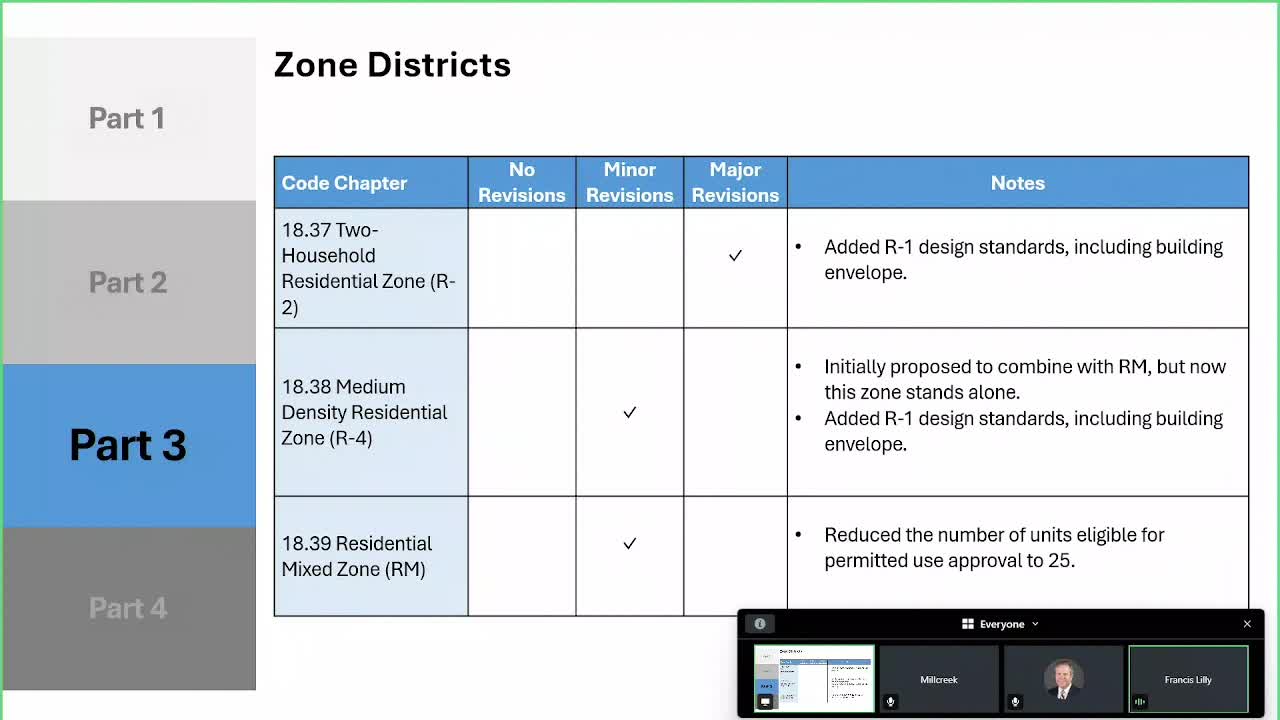Mill Creek planning staff propose new residential zoning and design standards
February 19, 2025 | Millcreek City Planning Commission , Millcreek, Salt Lake County, Utah
Thanks to Excel Chiropractic and Scribe from Workplace AI , all articles about Utah are free for you to enjoy throughout 2025!

This article was created by AI using a video recording of the meeting. It summarizes the key points discussed, but for full details and context, please refer to the video of the full meeting. Link to Full Meeting
One of the key topics was the medium-density residential zone, which includes triplexes and fourplexes. Initially proposed to merge with the residential multifamily (RM) zone, it has now been established as a standalone zone. City staff recommended incorporating residential design standards to ensure that these multi-family units maintain a similar aesthetic to single-family homes. This approach is part of a broader strategy to encourage "gentle density" along major corridors, transitioning from commercial to residential uses without overwhelming existing neighborhoods.
The planning commission also addressed the residential mix zone, where the threshold for permitted use approval was reduced to 25 units. This decision was met with mixed reactions; while most community councils supported the change, the Mill Creek Union Council advocated for a lower limit of 12 units, citing concerns about the impact of smaller projects on neighborhood dynamics.
In addition to residential discussions, the meeting touched on updates to the mobile home and tiny home zones, where home businesses were added, and short-term rentals were removed. The mixed development zone saw the introduction of new design standards, ensuring that townhome projects meet modern expectations for aesthetics and functionality.
The planning commission also reviewed legacy zones, such as the Mill Creek Gardens site, which will retain its status while updating its use categories to align with contemporary standards. The neighborhood commercial zone was separated from the commercial zone, with new design standards introduced to enhance its integration into the community.
As the meeting progressed, the conversation shifted to the city center overlay zone, where adjustments to height regulations and setback requirements were proposed to better accommodate urban development while respecting residential boundaries.
With these discussions, Millcreek's planning commission is taking significant steps toward shaping a future that honors the city's character while embracing necessary growth. As the community awaits the final decisions, the balance between development and preservation remains a central theme in Millcreek's evolving landscape.
Converted from Millcreek City Planning Commission Meeting - February 19, 2025 meeting on February 19, 2025
Link to Full Meeting
Comments
View full meeting
This article is based on a recent meeting—watch the full video and explore the complete transcript for deeper insights into the discussion.
View full meeting
